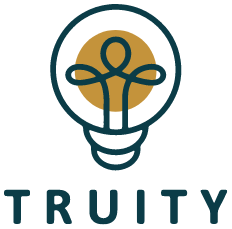There’s no question that childhood wounds define many of our fears and dislikes in later life. However, understanding how your Enneagram personality responds to these wounds can help you make sense of your reactions and the reasons behind them.
Take 28-year-old Gina, for example. This type-seven personality grew up with absent parents most of her life and didn’t receive the attention, love, and care that she should have.
As an adult carrying the scars from these wounds, Gina turned to material and hedonistic pursuits in a bid to fill the gaping holes inside her; turning down and running away from any real, solid connections. This didn’t work in the long run, though, and only fed her fear of feeling trapped.
Had Gina understood her enneagram type, she would have understood where her reactions were coming from and why. This would have helped her grow and better interact with the world, instead of letting her childhood wounds keep her down.
Every Enneagram type has a childhood struggle associated with it that creates behavioral patterns as these children grow up. Here’s a look at Enneagram childhood wounds of each type.
Enneagram Childhood Wounds
Enneagram One Childhood Wound
Type ones, as children, were subjected to the pressure of having to please the protective figures in their life. This meant that they couldn’t connect with these figures, who were either extremely strict or lenient or distracted.

To cope with this, ones often become self-critical, self-policing, and judgmental and repress their emotions. They develop their own rules and code, which they, as adults, have the freedom to follow. Through these rules and codes, they keep trying to be “better” as their childhood has taught them that they may never be acceptable otherwise (even if that isn’t the case).
Enneagram Two Childhood Wound
Enneagram twos go through childhood thinking that they can only earn love from their elders if they repress their own needs and are completely selfless. This obviously meant putting their needs on the back burner and never asking for help.
For this type, love had to be earned through self-sacrifice, and it’s a long road to learning to love themselves for who they are and not their actions.
Enneagram Three Childhood Wound
Threes connected deeply with the protective figures in their lives, whose needs they constantly strived to meet, and often before they were even expressed. This type felt like it had to earn love and approval through achievements.

Because of this, type threes nurture their “ego” selves instead of their “true” selves, as they feel the latter is worthless.
Enneagram Four Childhood Wound
Fours may go through an abusive childhood or have neglectful parents who raised them by some generic parenting book instead of giving the child what it needs. Because of this, fours constantly self-assess; however, this leads to them constantly feeling alienated.
Fours are on a perpetual search for their identities, believing that once they find them, their alienation will disappear. This also makes them long for the ideal romantic partner who will see them for who they are—except that this “ideal” partner is sometimes so unrealistic and, therefore, hard to find.
Enneagram Five Childhood Wound
Fives never knew their place in the family and always felt like an outsider looking in. The reasons behind this could be many—absent or biased parents, alienation, etc. To deal with this, fives retreat into themselves and their own worlds, constantly striving to just be contrary.

This turns them into adults who resent intimacy, demands on their time, and intrusions. They are emotionally distant and treat any emotions that arise as logical thoughts.
Enneagram Six Childhood Wound
Sixes grow up rejecting trust; though they are close to their parents growing up, the relationship isn’t always a positive one. This type blames itself for any abuse or ill-treatment at the hands of the protective figure, directing any anger at itself.
When they’ve finally had enough and lose all trust in their protective figure, they lose all trust in everything and everyone around them. As adults, they’re on a constant search for their “tribe”.
Enneagram Seven Childhood Wound
As we saw, sevens had absent authority figures in their childhood, which led them to depend on material pursuits and activities that would keep them engaged and excited to fill the gaping hole left by the absence of their authority figures.
Since no one else would spoil them, they sought to treat themselves and find happiness on their own.
Enneagram Eight Childhood Wound
Eights think that they can earn their place in the family by complementing the authority. This makes them feel the need to grow up sooner than they need to and suppress any vulnerability, as this could lead to rejection from the family.

Therefore, eights grow up feeling like they need to be strong, resolute, and invulnerable. If there was some amount of nurturing from the authority figures, they may lean towards being protective; if not, they could become aggressive and cold hearted.
Enneagram Nine Childhood Wound
Nines are deeply connected to their parents, whether the family is healthy or not. In the former, they flourish and become supportive and nurturing; in the latter, they try to numb themselves and tune out, which could become a case of living in denial.
The Final Word
It isn’t necessary that Enneagram personalities must experience only the childhood wounds associated with their particular type. These are general issues that the majority face and don’t discount any individual experiences that others face.

